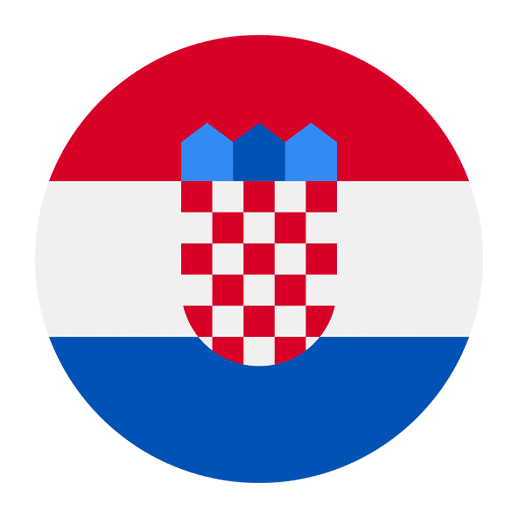Understanding Croatian Numerals and Quantifiers
Croatian, a South Slavic language spoken by around 5 million people primarily in Croatia, is known for its rich grammatical structure and intricate rules. One particular aspect that can pose a challenge for learners is the system of numerals and quantifiers. This article aims to provide a comprehensive guide to understanding Croatian numerals and quantifiers, simplifying this complex topic for English speakers.
Numerals in Croatian
Numerals in Croatian are divided into several categories: cardinal numbers, ordinal numbers, and collective numbers. Each category has its own rules for declension and usage.
Cardinal Numbers
Cardinal numbers are the basic numbers used for counting. Here’s a list of Croatian cardinal numbers from 1 to 10:
1 – jedan / jedna / jedno
2 – dva / dvije / dvoje
3 – tri
4 – četiri
5 – pet
6 – šest
7 – sedam
8 – osam
9 – devet
10 – deset
Notice that the numbers 1 and 2 have gender variations. “Jedan” is masculine, “jedna” is feminine, and “jedno” is neuter. Similarly, “dva” is masculine and neuter, while “dvije” is feminine.
From 11 to 20, the numbers are as follows:
11 – jedanaest
12 – dvanaest
13 – trinaest
14 – četrnaest
15 – petnaest
16 – šesnaest
17 – sedamnaest
18 – osamnaest
19 – devetnaest
20 – dvadeset
For numbers beyond 20, Croatian uses a combination of the tens and units, similar to English. For example:
21 – dvadeset jedan
30 – trideset
45 – četrdeset pet
59 – pedeset devet
100 – sto
Declension of Cardinal Numbers
Cardinal numbers in Croatian are not always used in their nominative form. They need to be declined according to the case they are in. For example, the number “jedan” (one) declines as follows:
Nominative: jedan / jedna / jedno
Genitive: jednog / jedne / jednog
Dative: jednom / jednoj / jednom
Accusative: jednog / jednu / jedno
Locative: jednom / jednoj / jednom
Instrumental: jednim / jednom / jednim
Ordinal Numbers
Ordinal numbers indicate the position or order of objects. Here are the first ten ordinal numbers in Croatian:
1st – prvi / prva / prvo
2nd – drugi / druga / drugo
3rd – treći / treća / treće
4th – četvrti / četvrta / četvrto
5th – peti / peta / peto
6th – šesti / šesta / šesto
7th – sedmi / sedma / sedmo
8th – osmi / osma / osmo
9th – deveti / deveta / deveto
10th – deseti / deseta / deseto
Ordinal numbers in Croatian also need to agree in gender with the nouns they describe and are declined similarly to adjectives.
Collective Numbers
Collective numbers are used to describe a group of people or objects as a single unit. They are less commonly used but are important to understand. Here are a few examples:
2 – dvoje
3 – troje
4 – četvero
5 – petero
Collective numbers are usually used with nouns that are inherently plural, such as “djeca” (children) or “ljudi” (people).
Quantifiers in Croatian
Quantifiers are words that indicate quantity. In Croatian, quantifiers can be categorized into several types: definite quantifiers, indefinite quantifiers, and partitive quantifiers.
Definite Quantifiers
Definite quantifiers specify an exact quantity. Common definite quantifiers in Croatian include:
– mnogo (many, much)
– malo (few, little)
– nekoliko (a few, several)
– dovoljno (enough)
For example:
– Mnogo ljudi je došlo na zabavu. (Many people came to the party.)
– Imam malo novca. (I have little money.)
Indefinite Quantifiers
Indefinite quantifiers do not specify an exact amount but give a general sense of quantity. Examples include:
– nekoliko (some, a few)
– nekoliko puta (a few times)
– nekoliko dana (a few days)
For example:
– Nekoliko ljudi je već stiglo. (Some people have already arrived.)
– Nekoliko puta sam bio tamo. (I have been there a few times.)
Partitive Quantifiers
Partitive quantifiers indicate that only a part of a whole is being considered. Examples include:
– dio (part)
– komad (piece)
– malo (some)
For example:
– Dio kolača je pojeden. (Part of the cake has been eaten.)
– Uzmi komad kruha. (Take a piece of bread.)
Combining Numerals and Quantifiers
Combining numerals and quantifiers in Croatian requires understanding how they interact with nouns and verbs. Here are a few key points:
Agreement with Nouns
Numerals in Croatian must agree with the nouns they quantify in terms of gender, case, and number. For example:
– Jedan čovjek (One man) – “Jedan” agrees with “čovjek” in gender and number.
– Dvije žene (Two women) – “Dvije” agrees with “žene” in gender and number.
Verb Agreement
When numerals are used as the subject of a sentence, the verb must agree in number with the numeral. For example:
– Jedan čovjek je došao. (One man came.)
– Dva čovjeka su došla. (Two men came.)
Notice that the verb “došao” changes to “došla” to agree with the plural subject “dva čovjeka.”
Special Cases
Croatian has some special cases and exceptions when it comes to numerals and quantifiers. Here are a few notable ones:
Using “Jedan” as an Article
The numeral “jedan” can also function as an indefinite article, similar to “a” or “an” in English. For example:
– Vidio sam jednog psa. (I saw a dog.)
– Kupio sam jednu knjigu. (I bought a book.)
In these cases, “jedan” is not just indicating the number but also serving to introduce a non-specific noun.
Special Forms for Large Numbers
Croatian has special forms for large numbers, particularly in the thousands and millions. For example:
– 1,000 – tisuća
– 1,000,000 – milijun
– 1,000,000,000 – milijarda
When using these large numbers, they need to be declined according to the case they are in, similar to smaller numbers. For example:
– Genitive: tisuće, milijuna, milijarde
– Dative: tisući, milijunu, milijardi
Special Use of Collective Numbers
Collective numbers are often used in specific contexts, such as describing groups of people or things that are considered a single unit. For example:
– Dvoje djece (Two children)
– Troje ljudi (Three people)
In these cases, the collective number is used to emphasize the group as a whole rather than individual members.
Practical Tips for Learning Croatian Numerals and Quantifiers
Understanding and mastering Croatian numerals and quantifiers can be challenging, but with practice and the right strategies, you can become proficient. Here are some practical tips:
Practice with Real-Life Examples
One of the best ways to learn numerals and quantifiers is to practice with real-life examples. Try counting objects around you, describing quantities of items in your home, or using numbers in conversations with native speakers.
Use Flashcards and Exercises
Flashcards and exercises can be helpful tools for memorizing numerals and their declensions. Create flashcards for different numbers and their forms, and practice regularly to reinforce your knowledge.
Pay Attention to Context
Context is crucial when using numerals and quantifiers in Croatian. Pay attention to the context in which numbers are used, and practice using them in different scenarios to understand how they function in various contexts.
Learn Common Phrases and Expressions
Learning common phrases and expressions that use numerals and quantifiers can help you become more comfortable with their usage. For example, learn how to ask for prices, give directions, or describe quantities in everyday conversations.
Seek Feedback from Native Speakers
Feedback from native speakers can be invaluable in improving your understanding and usage of numerals and quantifiers. Practice speaking with native speakers and ask for feedback on your usage to identify areas for improvement.
Conclusion
Understanding Croatian numerals and quantifiers is an essential part of mastering the language. While it may seem complex at first, with practice and the right strategies, you can become proficient in using numerals and quantifiers in various contexts. Remember to practice regularly, pay attention to context, and seek feedback from native speakers to improve your skills. With dedication and effort, you can navigate the intricacies of Croatian numerals and quantifiers with confidence.

